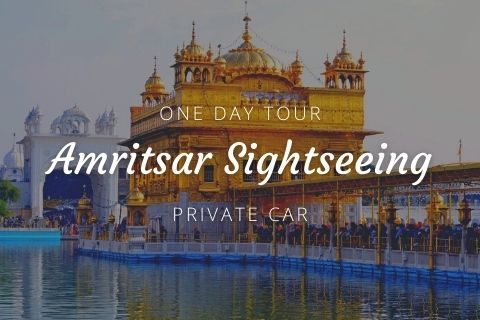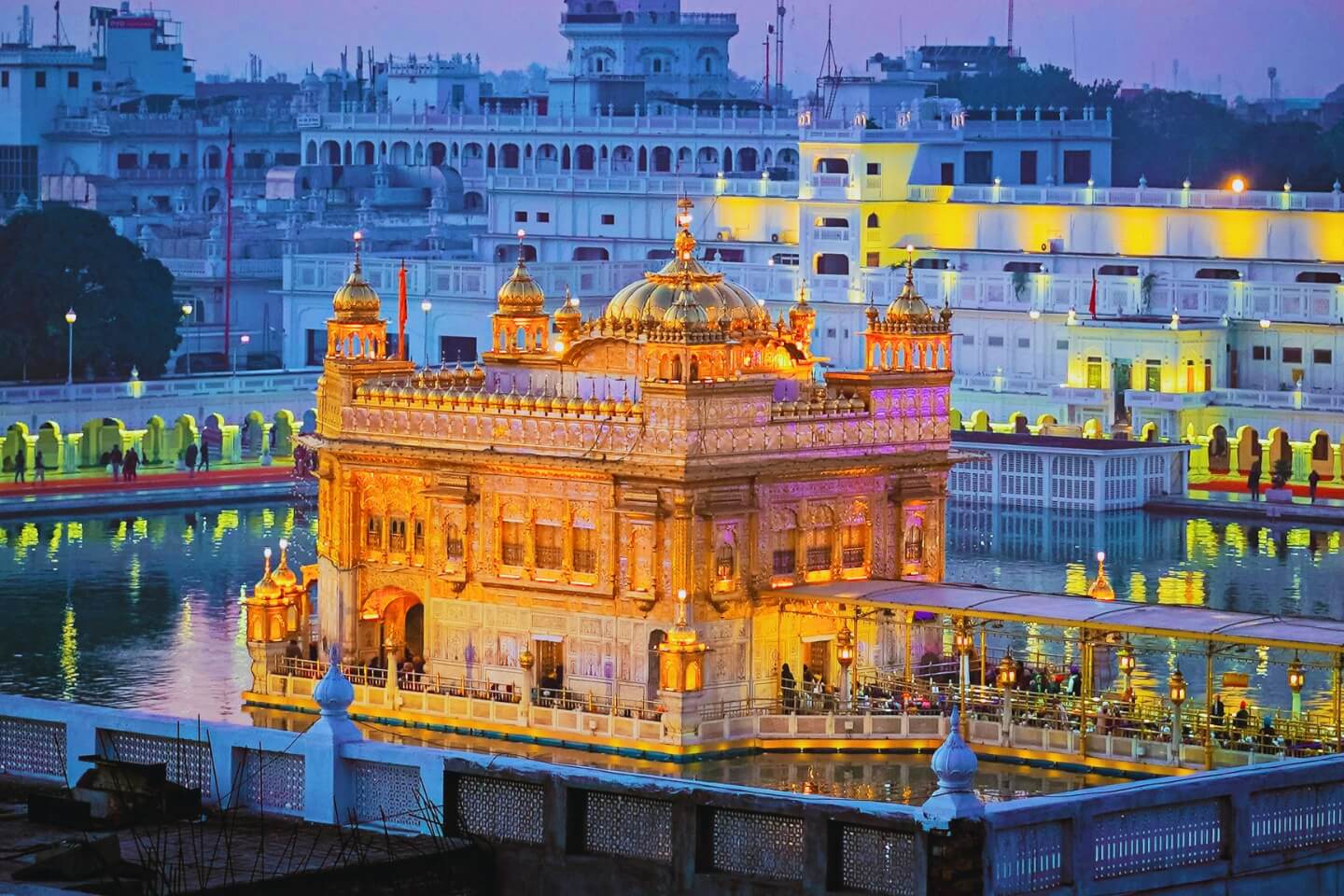A visit to Amritsar is like hitting gold in terms of travel. Amritsar is the biggest city in Punjab and one of India's most spiritual towns. Every day, thousands of people and cultural vacationers alike go to Amritsar for one reason: to see the iconic Golden Temple. But there is nothing like wandering around the gleaming edifice and sharing a dinner (langar) with dozens of other guests from the temple's large, volunteer-run kitchen.
However, when you go further into this dynamic, easy-going city, you'll encounter several other unique facets hooking you up with Amritsar. For example, you may travel to Pakistan's border to see the daily Wagah Border Ceremony, eat delectable Punjabi cuisine, meander around the Mandir Mata Lal Devi, and explore the Summer Palace. Amritsar is also a great place to shop for Handloom fabrics.
Are you ready to discover everything that Amritsar has to offer? With this list of the top tourist attractions of Amritsar, you can plan an amazing vacation to this beautiful city.
01. The Golden Temple
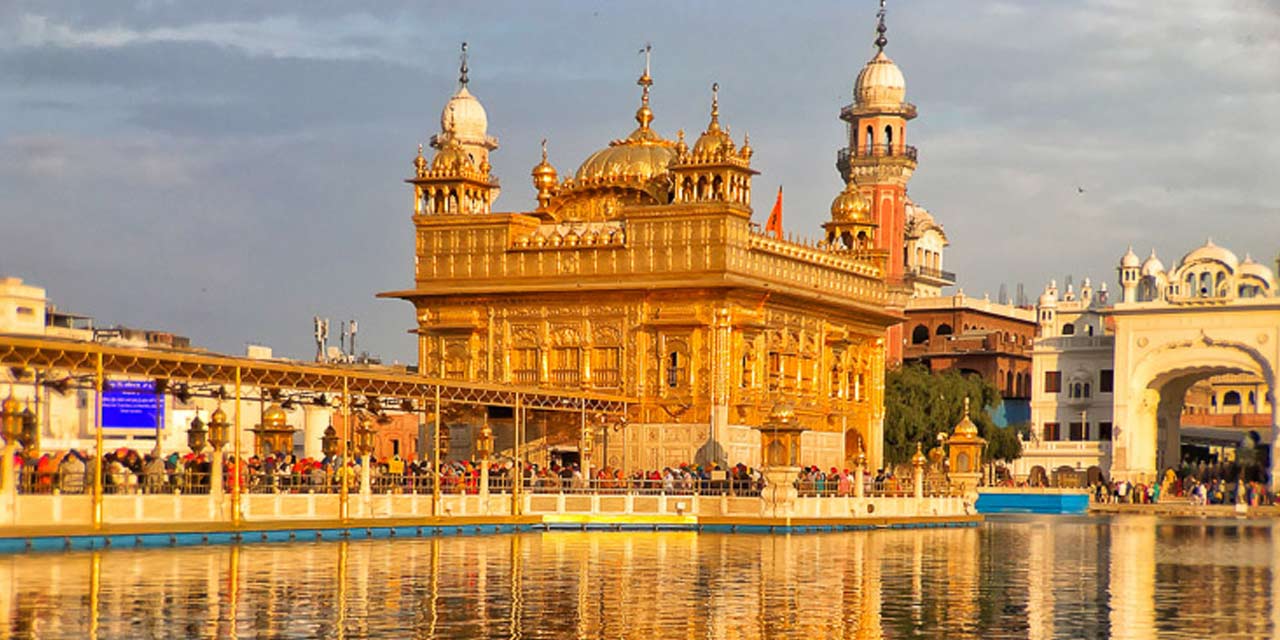
The Golden Temple, a two-story edifice plated in actual gold and encircled by a 5.1-meter-deep manmade lake, is Amritsar's undisputed top attraction. This renowned holy temple is one of the most sacred places on this planet for Sikhs, with many of them making pilgrimages to the shrine at least once in their lives.
You must conceal your hair, take off your socks and shoes, and step through a tiny stream of running water to clean your feet before entering the Gurdwara complex, which houses the Golden Temple. Then, as devotees sing and soak in the water, you'll go clockwise around the pool's inlaid marble path.
One of the numerous things to do at the Golden Temple is to visit the temple's gleaming inner sanctum, where monks chant melodies from the holy scripture Guru Granth Sahib. The world's most extensive communal kitchen is located here, and anyone is welcome to sit in the large three storied community hall and have a free vegetarian lunch with other visitors. Every day, swarms of helpers chop onions, peel garlic, and cook big vats of lentils and flatbread for up to 100,000 guests.
Inside the Akal Takhat (a seat of power within the Golden Temple complex), you can examine a collection of holy Sikh weaponry and learn more about Sikhism at the Golden Temple Interpretation Centre, hidden beneath the temple's clock-tower entrance.
The Golden Temple is a fantastic location where you can become personally involved if you so desire. You can contribute at the Golden Temple Kitchen and meet people from the community while preparing lunch. You can also spend up to three nights at the Golden Temple in one of its tourist lodgings. If you stay here, you'll have quick access to the Golden Temple around sunrise, which is the most significant time of day to watch it glow.
#Tip: Don’t miss devouring the Khada Prasad, their traditional sweet preparation made from wheat flour and ghee, as you exit the main sanctum.
- Timings: 12:00 AM – 12:00 AM
- Entry Fee: Free
02. Wagah Border Ceremony
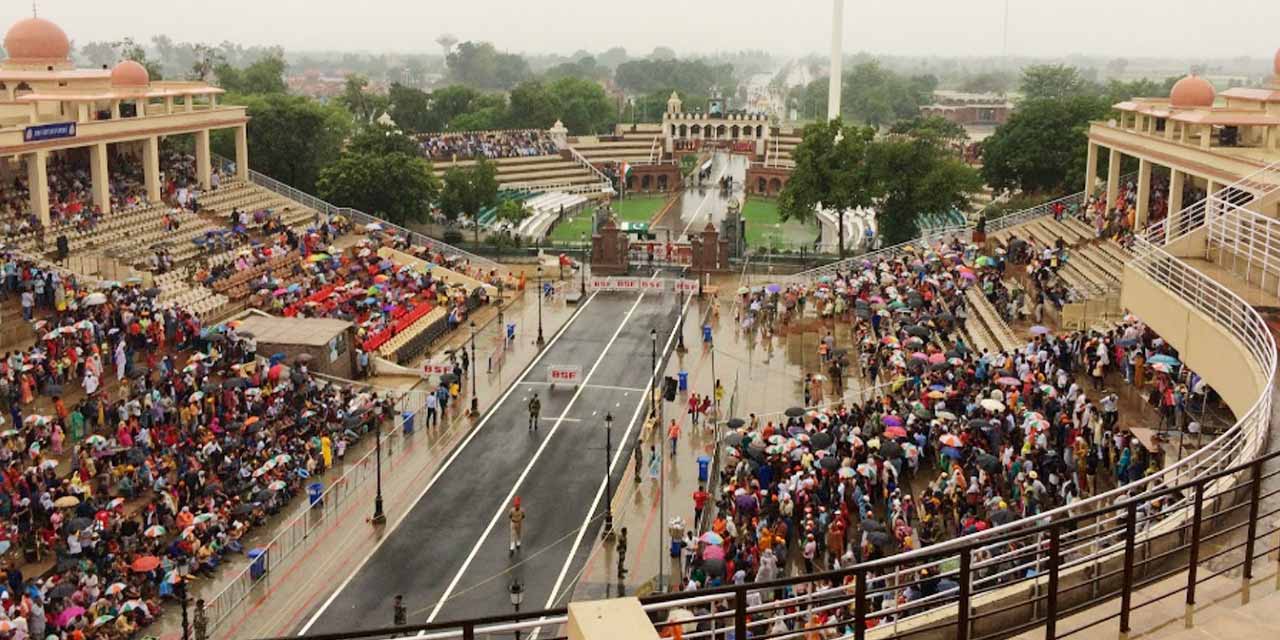
A 31-kilometre trip west of Amritsar's city centre will take you to the Pakistani border, where a unique border-closing ceremony occurs every afternoon at twilight. The Beating Retreat Ceremony, full of glitz and glamour, features goose-stepping soldiers from the Indian Border Security Force and Pakistan Rangers honouring each other, descending and folding their flags, and locking the border gates.
Tourists (who are usually seated in a special VIP zone after flashing their foreign passport) get the opportunity to view the significant disparities between Pakistan and India. Men and women sit separately in stadium-style seating on the Pakistani side, and the atmosphere is much more sombre. However, it is a nationalistic event on the Indian side. Females dance in the street as Bollywood music blasts from speakers while spectators wave Indian flags.
Even though the ceremony is only 45 minutes long, it provides enough recollections for hours of recounting back at home.
- Timings: 9:00 AM – 6:00 PM
- Entry Fee: No entry fee (Seating and entry is on First Come First Served Basis)
03. Partition Museum
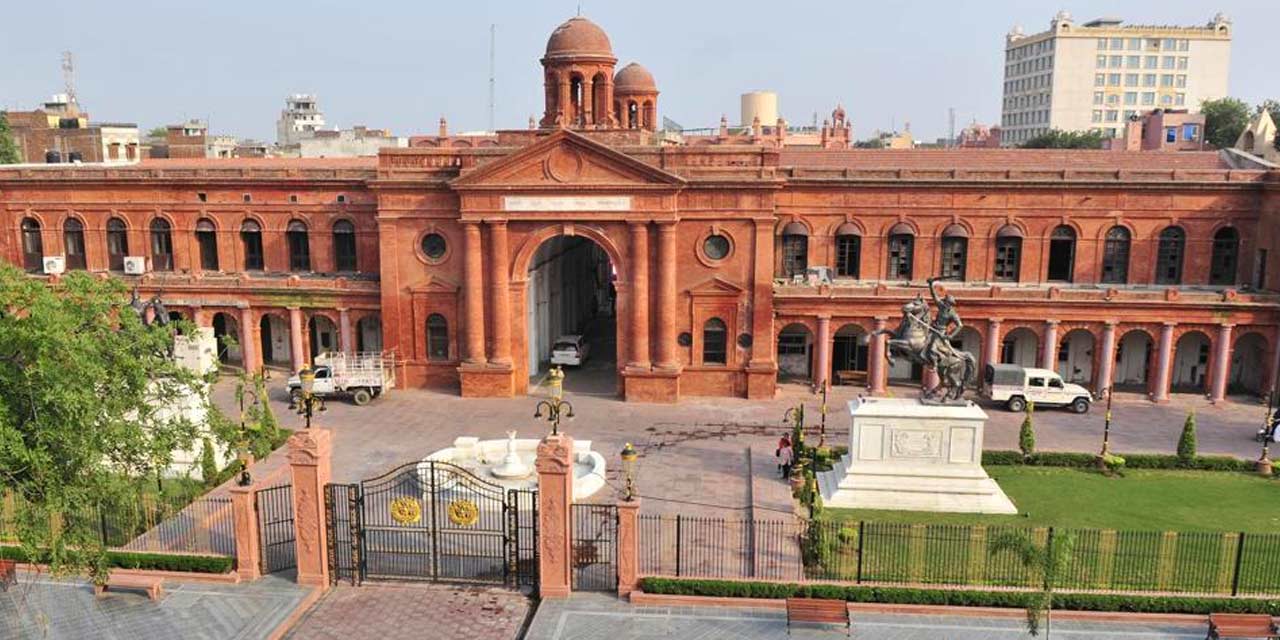
1947 was a watershed moment in Indian history. It was not only the year when India got independence from the British, but it was also the year it was partitioned into two separate countries, India and Pakistan.
The Partition Museum in Amritsar, the world's first institution dedicated entirely to partition, educates visitors and travellers about this critical period in history. It includes a harrowing compilation of news clippings, vintage shots, and historical accounts from those who witnessed the bloodshed leading up to the two countries' split and the subsequent resettling of refugees.
In addition, you will gain a better knowledge of the root of hostility between Pakistan and India due to this encounter. Please make a note on a green leaf and tie it on the Tree of Hope as you leave the museum.
- Timings: 10:00 AM – 6:00 PM (Closed On Mondays)
- Entry Fee: ₹10 (Indians), ₹250 (Foreigners)
04. Jallianwala Bagh
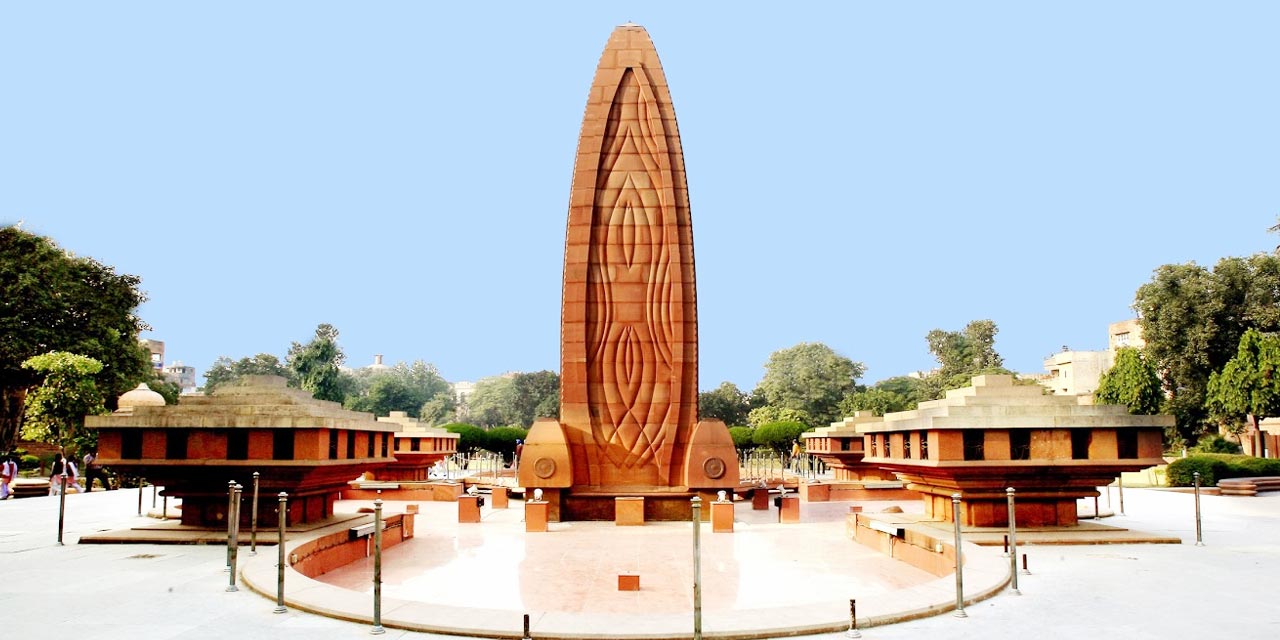
Another famous location in Amritsar is Jallianwala Bagh, located behind the Golden Temple. The public park honours the estimated 1,500 individuals killed or injured in 1919 when British troops were directed to strike on peaceful protesters seeking to release arrested Indian Independence Movement leaders. Hundreds of victims huddled behind the walls to avoid the shooting, and bullet holes can still be seen in the walls.
The Martyrs' Gallery at the memorial site features key participants in Indian independence. You may also view an eternal flame and witness a moving presentation about the victims.
- Timings: 9:00 AM – 6:00 PM
- Entry Fee: Free
05. Baba Atal Tower
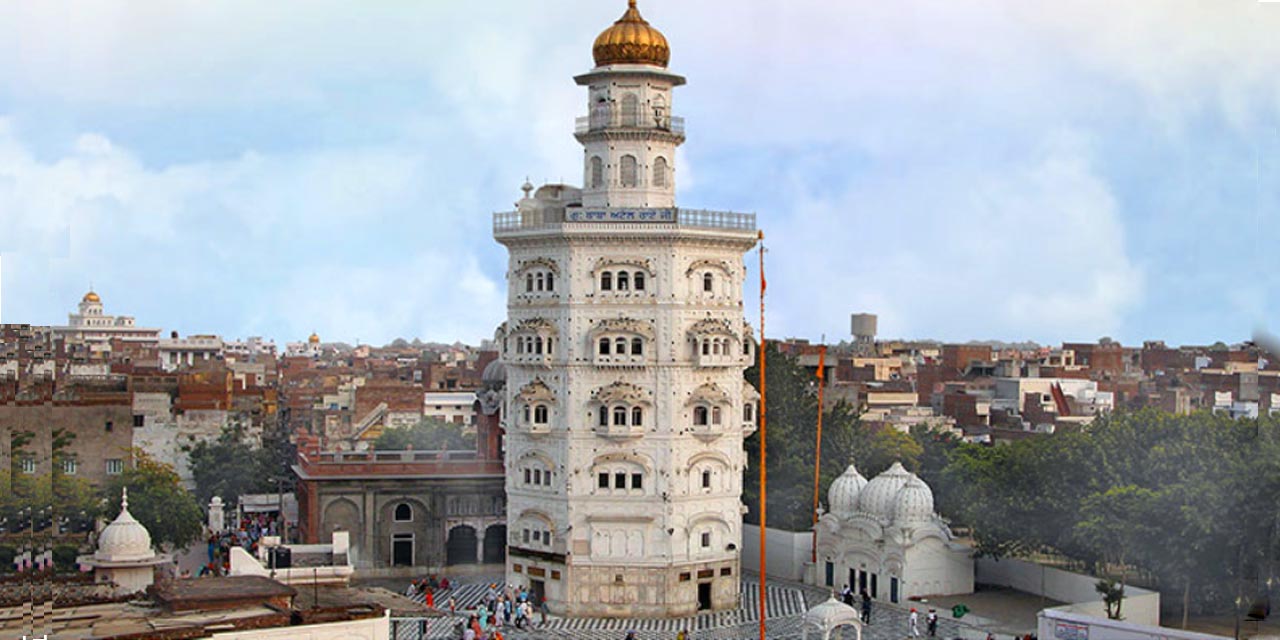
Baba Atal Tower is a notable site in Amritsar in one's way, despite being overshadowed by the nearby Golden Temple. The structure is a work of art, with nine octagonal floors piled 40 metres high, making this one of Amritsar's highest buildings.
The 9-story octagonal tower depicts a year in the life of Atal Rai, who died at the age of nine. Historically a samadhi of Baba Atal Rai, the structure was gradually converted into a Gurdwara. Along with the Kaulsar Sarovar, it is Amritsar's highest tower. With thousands of travellers visiting from all over the world, this architectural masterpiece is one of Punjab's most popular attractions. The tower holds several tiny paintings depicting Guru Nanak's life and teachings.
The devotees have long believed that taking a plunge in the holy water of the Kaulsar Sarovar will bring unexplained wide-spread rains to Amritsar. An ancient proverb goes, 'Baba Atal Pakiyan Pakaiyan Ghal,' which means Baba Atal Rai has sent us previously prepared food. The Gurdwara langar is considered Amritsar's sole continuous langar, serving tourists 24 hours a day. Only the voluntary service of Gursikhs has allowed this to happen.
Atal Rai, the son of a Sikh guru, is honoured by the Baba Atal Tower. According to legend, Atal Rai managed to perform the wonder of resurrecting someone from the dead before giving up his life in penance for trying to interfere with God's work. The views from the top of the structure are some of the finest in the entire city of Amritsar. It is not only a sign of splendour and aesthetic riches, but it also reinforces the notion of Baba Atal Rai's almighty power.
- Timings: 7:30 AM – 7:30 PM
- Entry Fee: Free
06. Ram Bagh Gardens

Are you looking for a peaceful respite from Amritsar's bustling streets? Ram Bagh Gardens, a large public park, is an excellent place to start. The natural space is brimming with exotic plants, flowers, and trees, as well as soothing goldfish-filled water features. The grounds also have statues, including a tribute to Ranjit Singh, the founder of the Sikh Empire in the early 1800s.
Tourists may visit the old Summer Palace at the park's centre. With scalloped doors, inlaid marble flooring, and lovely balconies, the two-story red-stone edifice is beautiful but somewhat less extravagant than other palaces you'll find around India.
Another famous sight in Ram Bagh Gardens is the Maharaja Ranjit Singh Museum And Panorama, located in the northwest corner. This museum has a variety of valuable Sikh cultural items, such as warrior attire, antique coins, and stunning pieces of art. However, the museum's most well-known exhibit is a multimedia diorama depicting Maharaja Ranjit Singh's early childhood and most famous battles. Battle cries sound effects bring the tableau to life.
- Timings: 12:00 AM – 12:00 AM
- Entry Fee: ₹10 per person
07. Khalsa College

Make a point of visiting Khalsa College on Amritsar's Grand Trunk Road if you're interested in architecture. The ancient educational institution also showcases 19th-century Indo-Saracenic architecture, which combines Western European aesthetics with the glitz of Indian and Persian forms.
Khalsa College's magnificent main edifice is spectacular, with exquisite onion domes and scalloped entrances, and has been the backdrop for numerous Bollywood films. Spend some time strolling about the peaceful campus and gardens, but bear in mind that the administrative buildings are only open to students and personnel since it is still a functional institution, after all.
- Timings: 8:30 AM – 5:00 PM (Closed On Saturdays & Sundays)
- Entry Fee: Free
08. Gobindgarh Fort
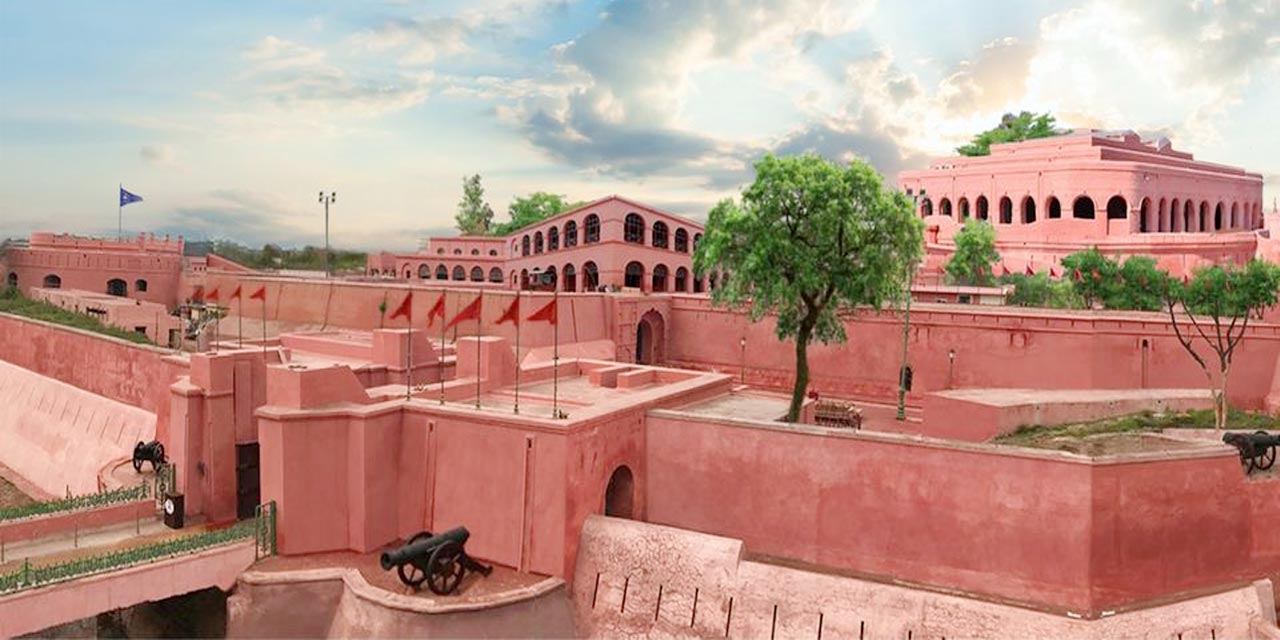
The Gobindgarh Fort, more than 250 years old, has become one of Punjab's most recognisable icons. The historic site dates back to when the Indian subcontinent was split into tiny princely states governed by monarchs. At one point, the fort was staffed by 12,000 men to safeguard Amritsar from prospective invasion.
Gobindgarh Fort has evolved into a contemporary educational centre dedicated to Amritsar's history and culture. The complex has four museums, including a Warfare Museum with rare weaponry, a Turban Museum with information on headwear from the province, and a Sikh Art Museum. After dark, stay for the stunning light and sound performances projected on the Colonial Bungalow of the fort. The light show takes place in English and Punjabi every day.
- Timings: 10:00 AM – 10:00 PM
- Entry Fee: ₹300 - ₹350 per person
09. Shri Durgiana Mandir

You could assume you're seeing double when you stare at Shri Durgiana Mandir (Durgiana Temple). With its half-gold, half-marble front, the domed edifice appears pretty much identical to the Golden Temple, and it's even located in the middle of a sacred lake.
While the two shrines have similar appearances, they serve quite different functions. Durgiana Temple is a Hindu holy place where devotees pay homage to the goddesses Durga, Laksmi, and Vishnu, the universe's guardian. Religious travellers mostly frequent the temple, but even non-religious visitors will be impressed by the inlaid marble's beauty and the temple's spiritual aura.
Keep an eye out for the beautiful silver doors displaying religious figures as you enter. Durgiana Temple is known as the Silver Temple because of this distinguishing characteristic.
- Timings: 6:00 AM – 12:00 PM, 12:30 PM – 10:00 PM
- Entry Fee: Free
10. Mandir Mata Lal Devi

The Mata Lal Devi Mandir is a sacred Hindu temple dedicated to the female saint, Lal Devi. According to legend, women who visit this Hindu shrine might increase their fertility. Non-devotees, on the other hand, could mistake the labyrinth spectacle for a playhouse.
You'll go through the gaping jaws of funhouse-style animal engravings and crawl through a wet cave to the shrine of Lal Devi after wandering through dark, narrow corridors that lead to colourful rooms decked in mirrored mosaics.
The whole thing will give you a different view on Hinduism and how adherents practice spirituality. It will also be one of the most popular activities in Amritsar.
- Timings: 5:00 AM – 11:00 PM
- Entry Fee: Free
11. Maharaja Ranjit Singh Museum
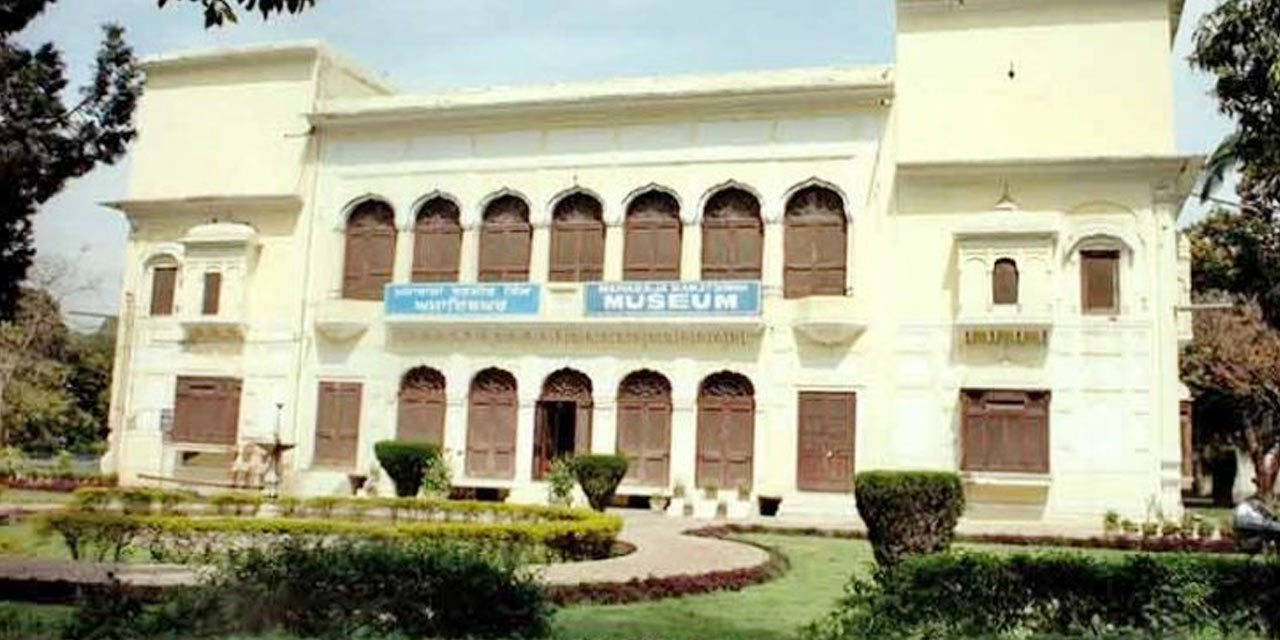
The Maharaja Ranjit Singh Museum is located in Amritsar's Company Bagh. Maharaja Ranjit Singh, the Sikh Empire's first ruler, used it as his summer home, and the museum is named after him. The museum presently includes exhibits on the Maharaja's life and the history, art, and design of the Sikh community in the 18th and 19th centuries. The museum is 1.5 kilometres from Amritsar Junction and 4 kilometres from the Golden Temple.
Transformed into a museum in 1977, it has several antiquities and personal things of the Maharaja, such as his gear and weaponry. It also has fantastic paintings, manuscripts, and coins from previous centuries on display. This reflects Maharaja's secular ethos and the province's rich heritage.
The paintings generally represent scenes from the palace and camp of the Sikh ruler. Amongst all of them, the one showing the city of Lahore is the most well-known among observers. The Rambagh Gardens surround the palace, known for its monument of the famed monarch with his horse.
- Timings: 10:00 AM – 5:00 PM
- Entry Fee: ₹10 per person
12. Shri Ram Tirth Temple

The Shri Ram Tirth Temple in Amritsar was established to commemorate the birthplace of Rama and Sita's twins, Luva and Kusha. The temple is made of lime yellow stone and goes back to the epic Ramayana when Sita was abandoned by Rama and left to the Ashram of Valmiki. It is stated that the fight between Ram's Ashwamedha troops and Luv-Kush took place here. Pilgrims view the twins' gurukul, located within the temple grounds, as an architectural marvel.
A fortnight after Diwali, the historic temple hosts a five-day bazaar when around one lakh visitors come to seek blessings. On Purnamashi night, devotees swim in the historic tank close to the temple. On Purnamashi night, a custom known as Tulla Torana is observed, in which light lanterns made of kneaded wheat and ghee are discharged into the lake.
This custom is meant to wash away all sins and satisfy Lord Rama. There is a particular concept that the trip is incomplete unless money or food is donated to charity for the poor.
- Timings: 6:00 AM – 8:00 PM
- Entry Fee: Free
13. Akal Takht
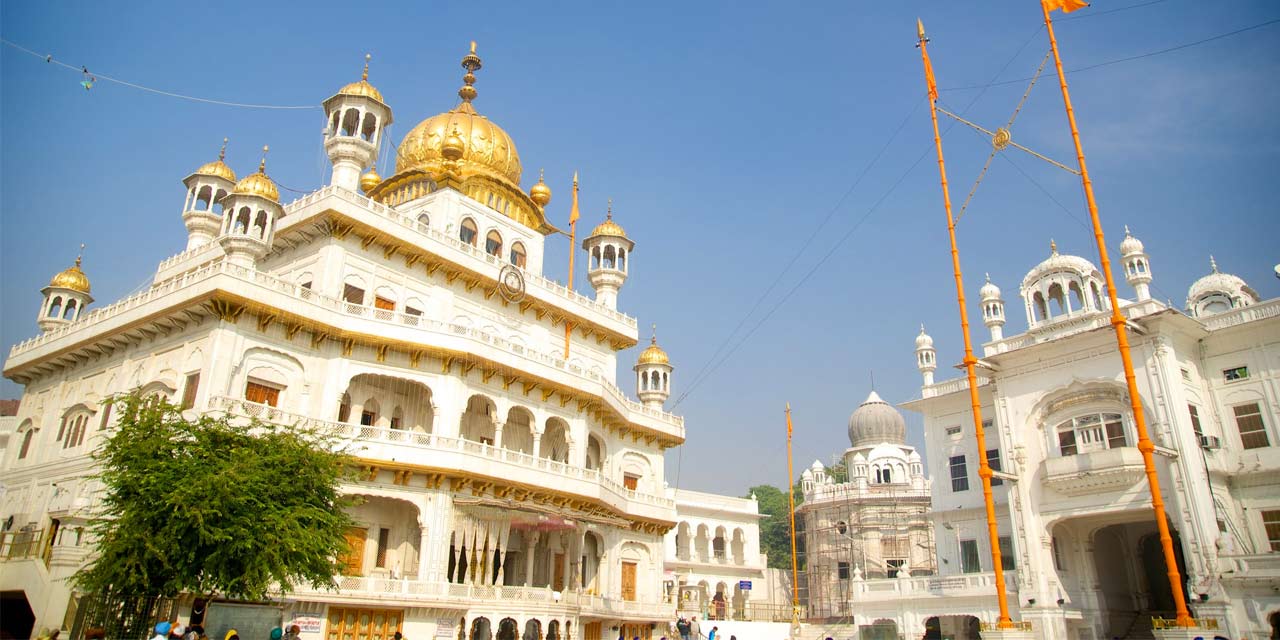
The Akal Takht (Throne of the Timeless One) is the Sikhs' highest political and administrative organisation, created in 1606 by Guru Hargobind, the sixth Sikh Guru. The Akal Takht is one of the Sikhs' Five Takhts located in Amritsar's iconic Golden Temple complex. These Takhts are the Sikh community's places of power and authority and the residence of the Jathedar, the foremost spokesman among them.
The Akal Takht is intended to symbolise political independence and fairness, where the Sikh people's spiritual and worldly issues may be addressed and evaluated.
The Akal Takht, just opposite the Harmindar Sahib, was erected on a huge mound of dirt over a broad open expanse in the Golden Temple complex. The elevated platform, which was initially 9 feet high, was enlarged to its present height of 12 feet in violation of the Royal Emperor Jehangir, who had commanded that no one sits on a raised platform higher than 3 feet unless it was an Emperor.
The priest saying the Rehras Sahib (Late afternoon prayer) and Ardas with a sword in his hand is one of the Akal Takht's traditions. Visitors may observe the unique weaponry of the Sikh Gurus and soldiers showcased in the Golden Palanquin every evening. Every night, the Guru Granth Sahib is carried here and transferred to the Golden Temple in the morning.
- Timings: 3:00 AM – 10:00 PM
- Entry Fee: Free
14. Harike Wetland and Bird Sanctuary
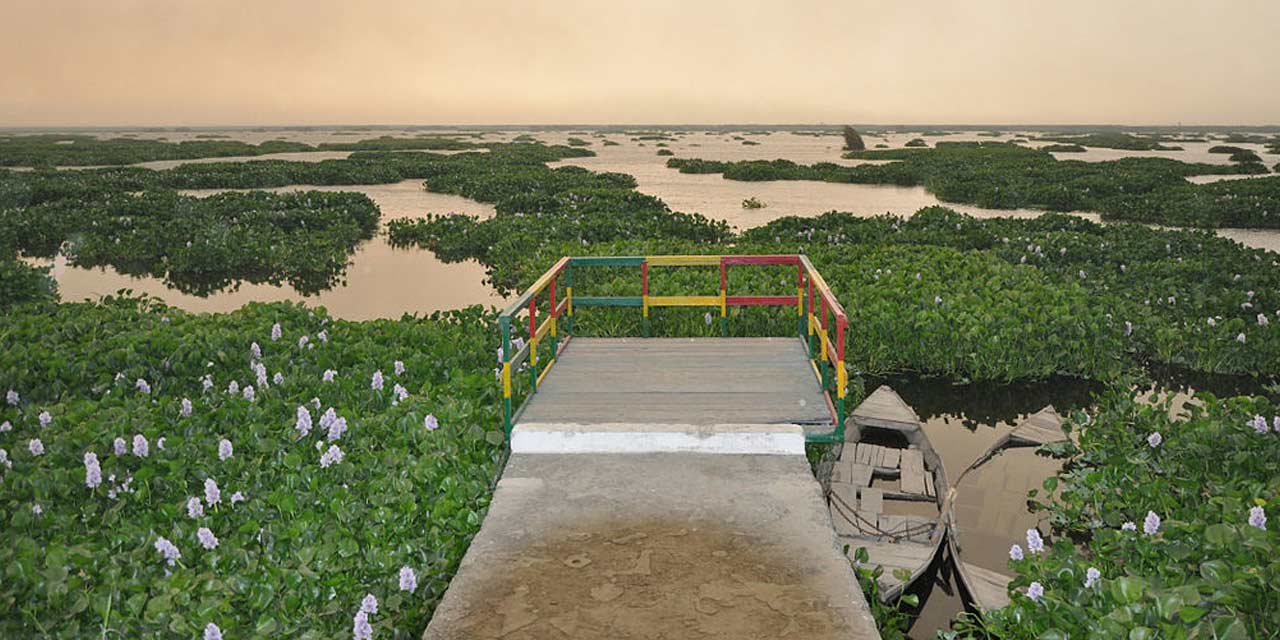
Harike Wetland, also known as 'Hari - Ke - Pattan,' is located on the Tarn Taran Sahib district boundary and is considered the largest manmade wetland in northern India. The wetland, which covers 4100 acres of land in Punjab, is scattered throughout Amritsar, Kapurthala, and Ferozepur.
The beautiful Harike Lake, located in the centre of the region and attracting many tourists, is the wetland's feature. In the swamp, there is also a bird sanctuary that attracts thousands of birdwatchers and environment enthusiasts.
The wetland, which was formed in 1952, was created when a dam was built at the junction of the river systems Beas and Sutlej. The marsh is home to many unusual and rare migratory birds that arrive here during the winter. The park is regarded as a refuge for birdwatchers because of its great biodiversity.
Approximately 375 bird species have been reported here to date. Birds such as the crested pochard, common pochard, and tufted duck, reptilian fauna such as the Indus river dolphin, smooth-coated otter, and seven species of relatively uncommon freshwater turtles, and mammals such as the Indian otter, jungle cat, jackal, Indian wild boar, and common mongoose are one of the most widely known wildlife. The wetland was designated as a sanctuary in 1982 and a Ramsar site in 1990 by the International Body of Wetlands. For admission, you must first get permission from forest officials.
- Timings: 9:00 AM – 5:00 PM
- Entry Fee: Free
15. Guru Ke Mahal
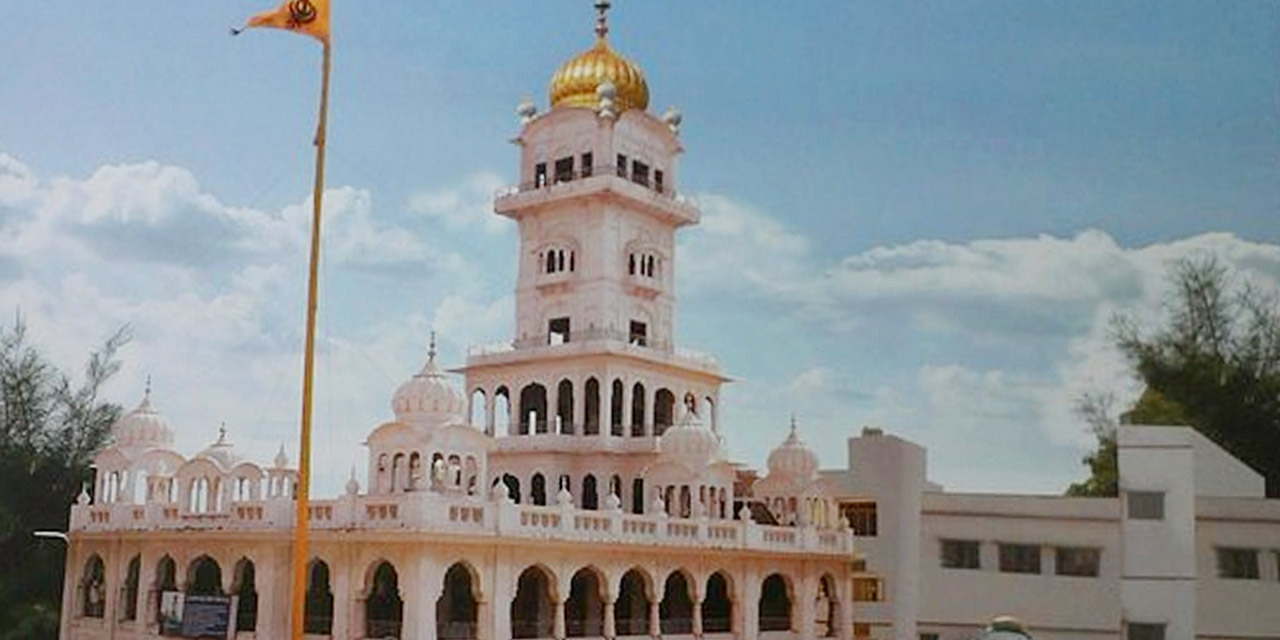
Guru Ke Mahal, which houses the Granth Sahib and their gurus, was built by Guru Ram Das in 1573 as just a little farmhouse that grew to house the Sikhs' famous gurus. Gurdwara Guru Ke Mahal is a simple cottage located on Guru Bazaar's main drag near the Golden Temple in Ramdaspur's holy city (now known as Amritsar).
The edifice was converted into a Gurdwara after it served as a house for Sri Guru Ram Das, the creator of Amritsar. It's a three-story tabernacle with an elevated platform on which the Sikhs' sacred book, Guru Granth Sahib, is kept.
The Mahal's construction is separated into three levels. The Gurus used this to meditate in the basement, which now functions as a meditation space. There is room for people to sit together and participate in kirtans on the second level. The Guru Granth Sahib has been repeated on the uppermost floor.
On Baisakhi, Sri Guru Tegh Bahadur is said to have been born in the Mahal. As a result, Baisakhi is also his birthday. On Baisakhi, in addition to the usual rites, special kirtans and langar known as Guru ka Langar are held. On Guru Tegh Bahadur Jayanti, hundreds of Sikhs and visitors visit this sacred monument. This simple small cottage, founded by Sri Guru Ram Das Ji, quickly became known as the centre of Sikh gurus, albeit shortly relocated.
- Timings: 5:00 AM – 10:00 PM
- Entry Fee: Free
16. Khair-ud-Din Masjid

Khair-ud-Din Masjid, built in 1876 by Mohd. Khairuddin is known for its architecture. The Khairuddin Masjid, also recognised as Jama Masjid, is a majestic mosque that played a significant role in India's independence war. From the brackets of this mosque, Syed Ata Ullah Shah Bukhari, a Muslim philosopher and political leader, urged the people to take up arms against British rule. From here, Tootie-e-Hind, Shah Attaullah Bukhari, issued the momentous call to wage war against the plundering British.
This spectacular formation, built in the arcuate style, is reminiscent of classic Islamic architecture, with exquisite beams and arches. The Jama Masjid's walls are embellished with beautiful calligraphy Aayats. The elaborate decorations, including small paintings, are done in a green colour that nicely complements the white and stands out right away. Locals and tourists alike flock to this stunning mosque on a daily basis.
- Timings: 6:00 AM – 8:00 PM
- Entry Fee: Free
17. Gurdwara Bir Baba Budha Sahib
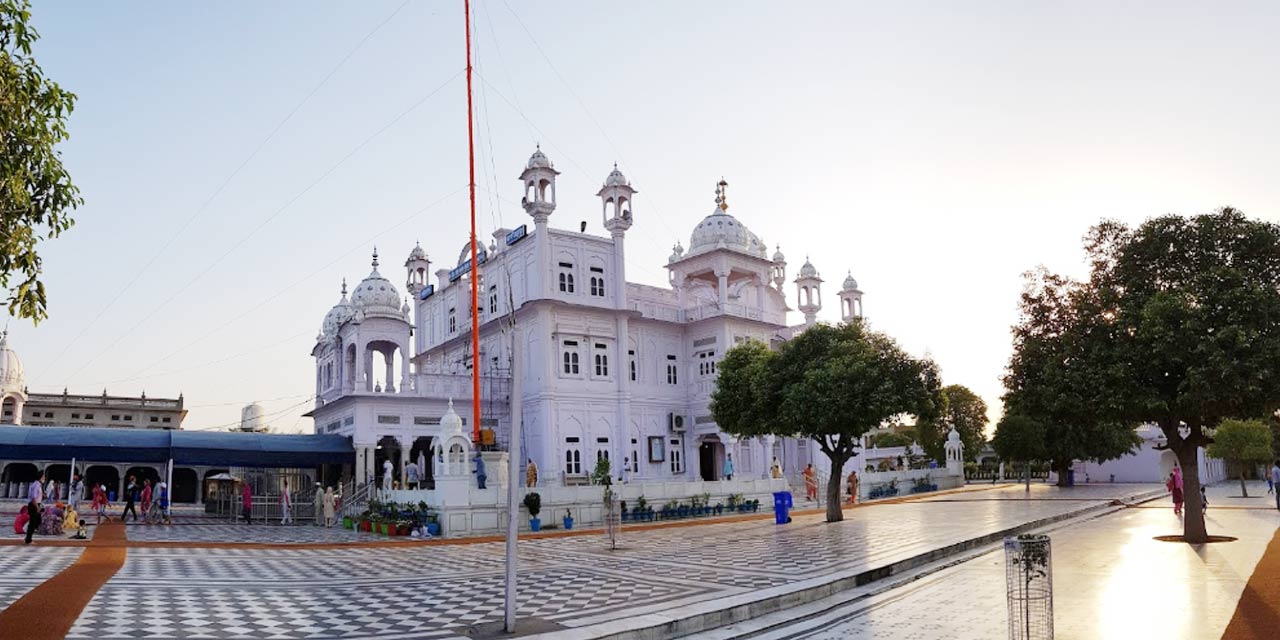
Gurdwara Bir Baba Budha Sahib, also addressed as Bir Sahib, is a Gurdwara devoted to Baba Budha Ji. The Gurdwara is located 20 kilometres south of Amritsar, near the town of Jhabal Kalan. To go to the Gurdwara, one can take a private cab. Tourists may observe Punjab's beautiful green rice and grain fields on their journey to the Gurdwara, capturing the essence of authentic rural Punjab.
Baba Buddha, the first Granthi, was anointed by the very first Sikh Guru Guru Nanak Dev as a youngster and anointed the five subsequent Gurus. He lived for 125 years. Within the Gurdwara, the precious Guru Granth Sahib is placed on a vaulted ceiling seat constructed of white marble. Devotees travel to this Gurdwara to seek Baba Buddha's blessings to have a child, as did Guru Arjan Dev, the fifth Sikh Guru, who visited Baba Buddha in the hopes of having a child.
In honour of Mata Ganga's dinner, the Gurdwara offers Missi roti and onion as Prashad. A two-story apartment structure, the Guru Ka Langar, and a huge dining hall are located beside the Gurdwara in a separate property. Each Bikrami month, thousands of devotees go to the ceremonies, making it the most important event of the year at this ancient place.
- Timings: 4:00 AM – 9:00 PM
- Entry Fee: Free
18. Goindwal Baoli
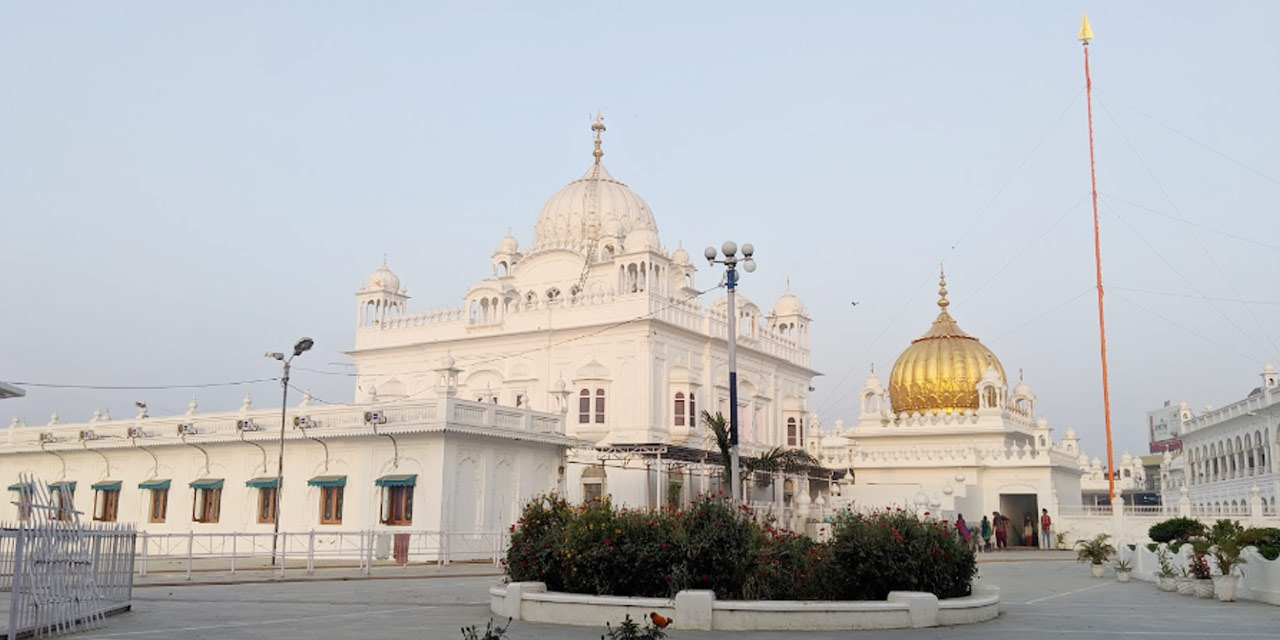
Goindwal (sometimes Goindval) Baoli is a step-well built by Guru Amar Das in the 16th century. It is located 50 kilometres southeast of downtown Amritsar. Tourists can take a cab or an automobile from the city to go to the well.
The Baoli (open-well) is a major Sikh centre located on the riverbank Beas. It is regarded among the first Sikh pilgrimage destinations. Guru Arjan Dev is supposed to have been born at Goindwal, giving it considerable religious significance within the Sikh community. The well was erected after the Sikhs were refused entry to the River Beas.
The 84-step set of stairs leading to the holy well represents the planet's 8.4 million various existences, with each step indicating 100,000 different living forms. The stairwells have been separated into two sections, one for men and one for women.
Visitors approach the area under a pointed archway and are greeted with multicoloured flower decorations and pictures of the Ten Gurus on the walls. The biography of Guru Amar Das is artistically depicted in the fresco artwork on the walls.
The gold-plated pinnacle of the lotus dome, which covers the ancient well, is surrounded by artistically designed domes that mimic the dome of a Gurdwara. As a show of appreciation, devotees can also offer marble pavers for the stairs. It is customary for visitors to recite 'Japji,' believing that doing so will help them break free from the cycle of life. After the ascent, pilgrims can dine at the langar, which is open all day for guests.
- Timings: 3:00 AM – 10:00 PM
- Entry Fee: Free
19. Punjab State War Heroes Memorial and Museum

The magnificent Bravehearts of Punjab are honoured at the Punjab State War Heroes Memorial and Museum. The museum immortalises the gallantry of the warriors of Punjab, presented everywhere with a spirit of freedom. It has a government gallery where Punjab's martial culture and military exploits may be exhibited. It is built in both traditional and contemporary architectural designs.
Several pictures, photos, paintings, antiques, weaponry, and interactive displays allow visitors to go back in time. Photographs from the wars of 1965 and 1971 are displayed in the museum. A fresco has been erected to honour the work and pay respect to the 21 Sikh troops who died in the 1971 conflict.
Like those of Gobindgarh Fort, the walls are made of Nanakshahi brick. With the extraordinary light and sound spectacle organised here, tourists may go through three eras: pre-British, British, and post-independence. The 7D theatre transports guests to prior conflict zones and is also a must-see spectacle during your vacation here.
The museum is a popular tourist destination before the Marching Retreat ritual at the Wagah border because of its vicinity to the Indo-Pak International Border. The 45-metre stainless steel sword maintained at the centre of this interesting museum is its main attraction. At the height of the conflict, the sword signifies the people's bravery and courage in protecting the country.
The magnificent sword is positioned on a body of water, with 3500 martyrs' names written on a memorial wall. The scrapped aircraft carrier ship MiG-23, the Indian Navy's INS Vikrant, and three tanks are also displayed. This museum not only serves as a tourist attraction, but it also serves as a continual inspiration for the youngsters and a remembrance of the sacrifices made in the name of freedom.
- Timings: 10:00 AM – 5:00 PM (Closed On Mondays)
- Entry Fee: ₹150 per person
20. Pul Kanjari
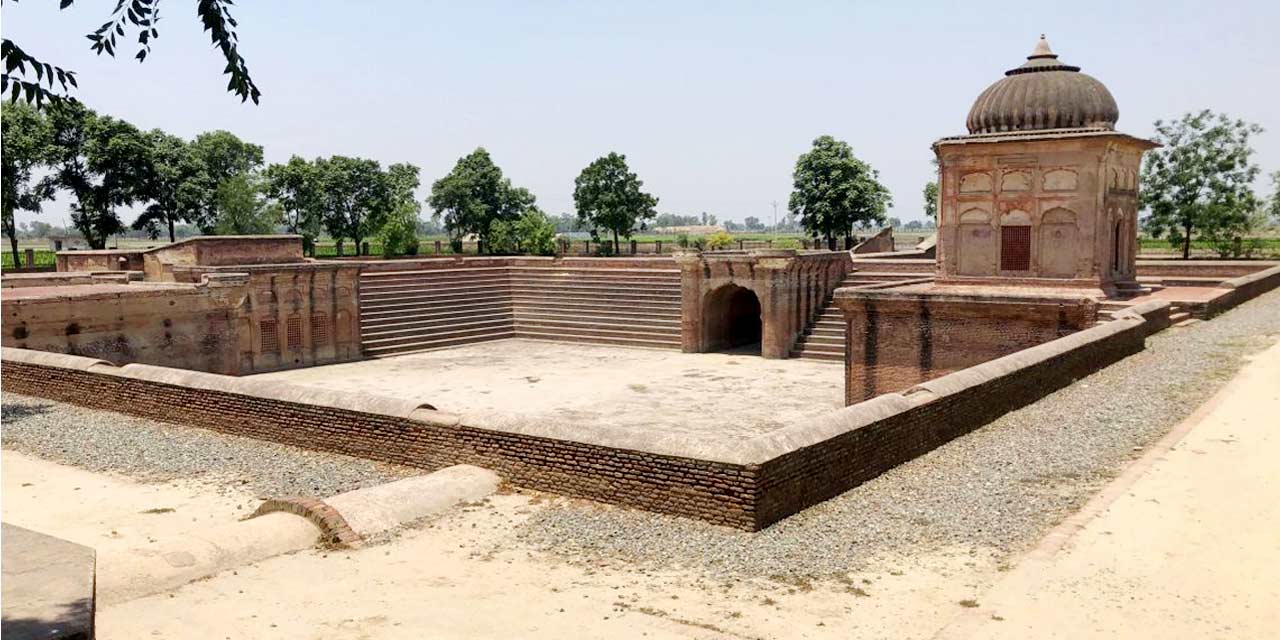
Pul Kanjari, often known as Amritsar's Taj Mahal, is a hamlet centred on Maharaja Ranjit Singh's colourful display of love. This settlement, near the Wagah border, is historically notable since Maharaja Ranjit Singh and his army used to stop here on their way between Amritsar and Lahore.
The town was called after a little bridge erected by Maharaja Ranjit Singh over the canal linking Amritsar and Lahore for his beloved dancer Moran, a Muslim dancer from the adjacent village of Makhanpura, during the eighteenth century. Pul Kanjari has just been refurbished and reopened to visitors by the Punjab government.
Apart from the bridge, the Maharaja's stronghold, which includes a Mosque, a Mandir, the Baradari, and a Sarovar, is also worth seeing. A war memorial has been established to honour the heroic souls of the Indo-Pak conflicts of 1965 and 1971 when this area was hotly contested by the Pakistani Forces and the Sikh regiments' Jawans.
Beautiful Mural work can be found on the walls, and Nanakshahi Slabs were utilised to build the Shiv Temple. During the partition, Pul Kanjari was a significant shopping destination. After the partition, residents of the region who survived the aftermath relocated to Chandigarh, Himachal Pradesh, Delhi, and other parts of India. Every August, these people return to pay their respects to their forefathers. They also conduct the Akhand walk in commemoration of those who perished at this historical spot.
- Timings: 10:00 AM – 8:00 PM
- Entry Fee: Free
21. Gurdwara Shri Tarn Taran Sahib
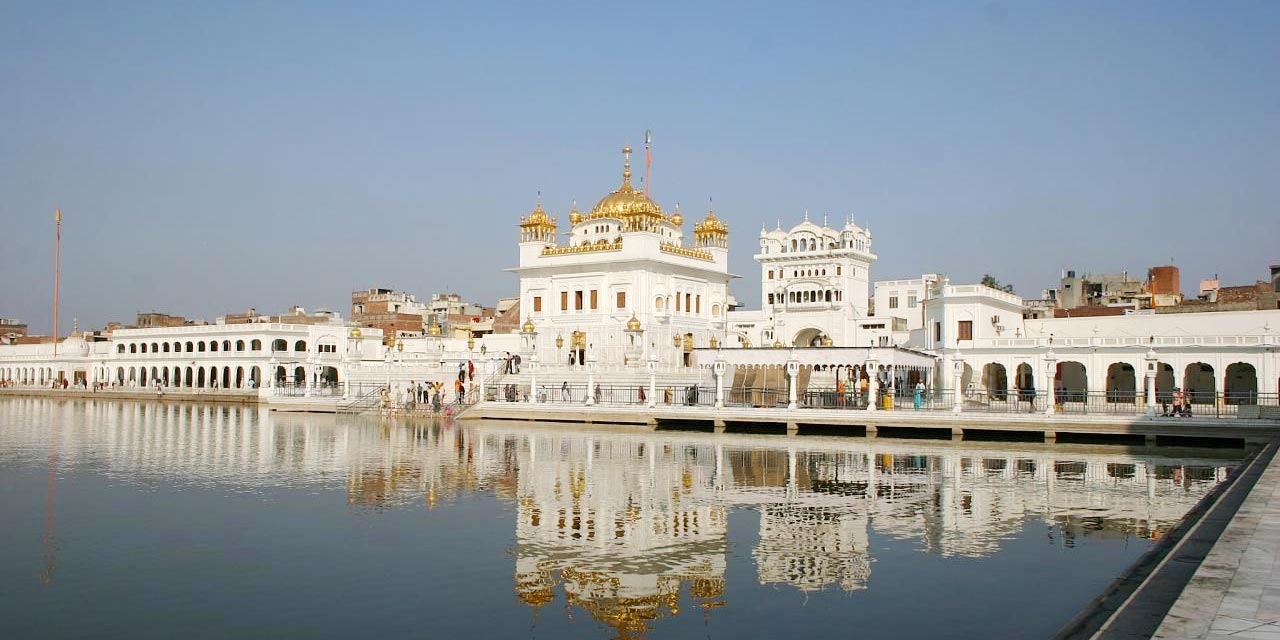
Guru Arjan Dev, the 5th Guru of the Sikhs, designed this Gurdwara. It's 22 kilometres from Amritsar, near the Tarn Taran Sahib village. The Sarovar was given the name 'Tarn Taran,' which translates as 'a boat that conveys one over the sea of existence.' The Gurdwara possesses the world's largest Sarovar, which was constructed in the Mughal architectural style.
Unfortunately, during the 1905 earthquake, the lotus dome covering the three-story structure was damaged. Every day, kirtan performances begin early in the morning and continue until late in the evening at the sacred Gurdwara, which site visitors have the opportunity to see. It is especially well-known for the pilgrimage that takes place on Amavas Day. Visitors and pilgrims think that the water of the Sarovar has medicinal properties and is capable of treating leprosy.
Elegant plasterwork reflects on glass pieces, and elaborate motifs adorn the ceiling and interior walls of the famed Gurdwara. Glistening gold sheets cover only the upper portion of the building. Under an extended dome, the Guru Granth Sahib is mounted on a platform. Kanvar Nau Nihil Singh, Maharaja Ranjit Singh's grandson, provided this platform.
The building's main hall, or Darbar Sahib, is gold-plated with a marble inset. Pilgrims can reach the location where Guru Arjan Dev made the initial cut for excavating the majestic Tarn Taran Sarovar in 1590 via a staircase of marble steps behind this hall. The complex has grown over time with the installation of new structures.
- Timings: 5:00 AM – 10:00 PM
- Entry Fee: Free
22. Gurdwara Mata Kaulan
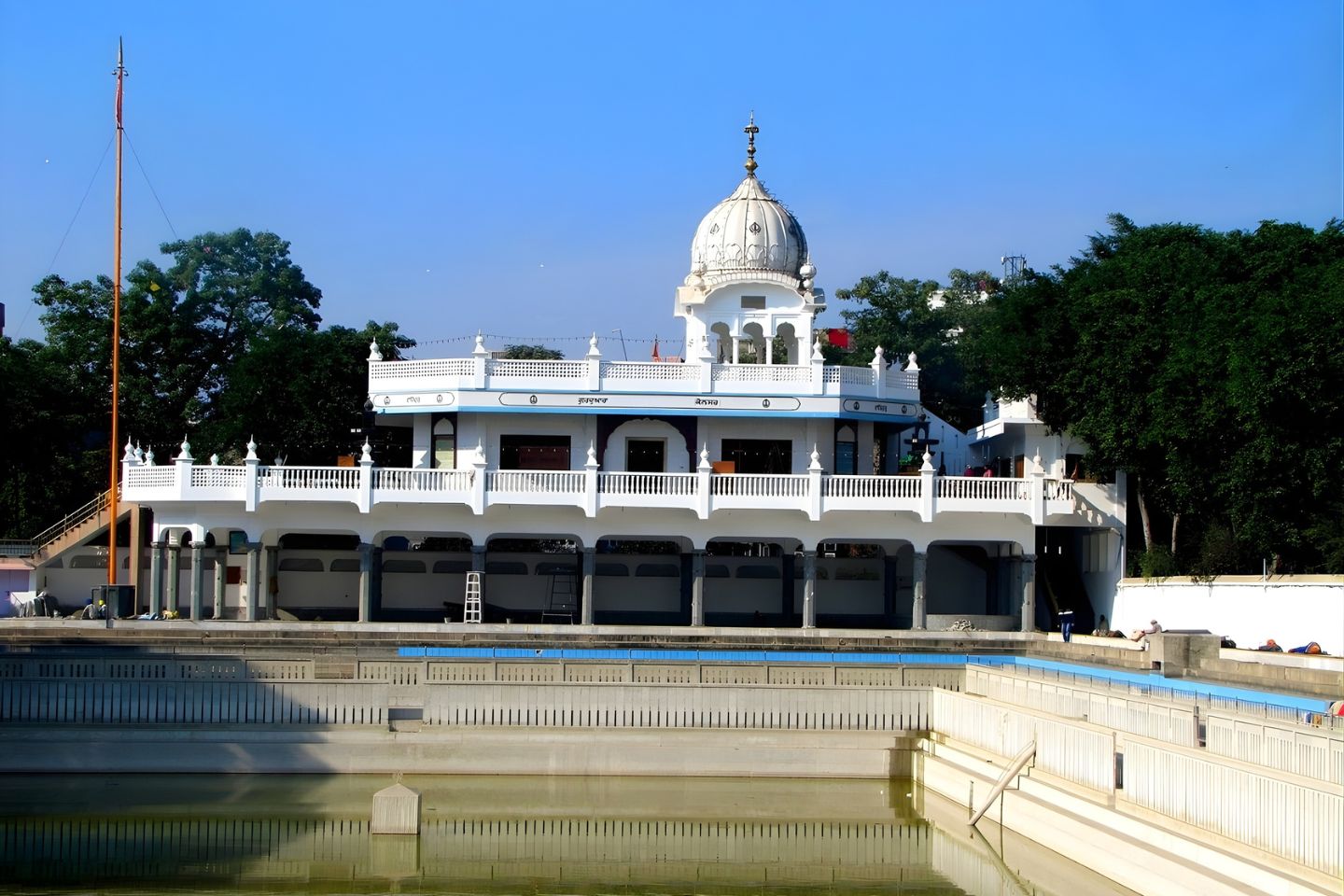
Mata Kaulan's hallowed shrine, also known as Gurdwara Mata Kaulan, is located in the western part of Amritsar's Golden Temple. This Gurdwara is named after Bibi Kaulan, a renowned follower of Guru Har Gobind. Bibi Kaulan, a saintly lady, was bred as a Muslim but eventually converted to Hinduism.
For her commitment to Guru Hargobind Ji, Bibi Kaulan's father rejected her and declared her dead. Saint Mian Mir, a native of the same area, secretly moved her to Amritsar after she was deserted. She lived the remaining life performing religious tasks while dedicated to Guru Har Gobind. She was later buried at Gurdwara Kaulan's western section.
Bibi Kaulan's commitment to the Gurdwara is frequently acknowledged throughout the temple complex. The elder veterans of the Sikh community recall her kirtans, which she sang diligently every evening.
Guru Har Gobind encouraged worshippers to take a plunge in the Kaulsar Sarovar before heading to the Amrit Sarovar, which is located close to the Gurdwara Mata Kaulan. The Sarovar is the first-ever holy water tank in the Muslim world to be named for a woman.
- Timings: 5:00 AM – 11:00 PM
- Entry Fee: Free
23. Gurdwara Chheharta Sahib
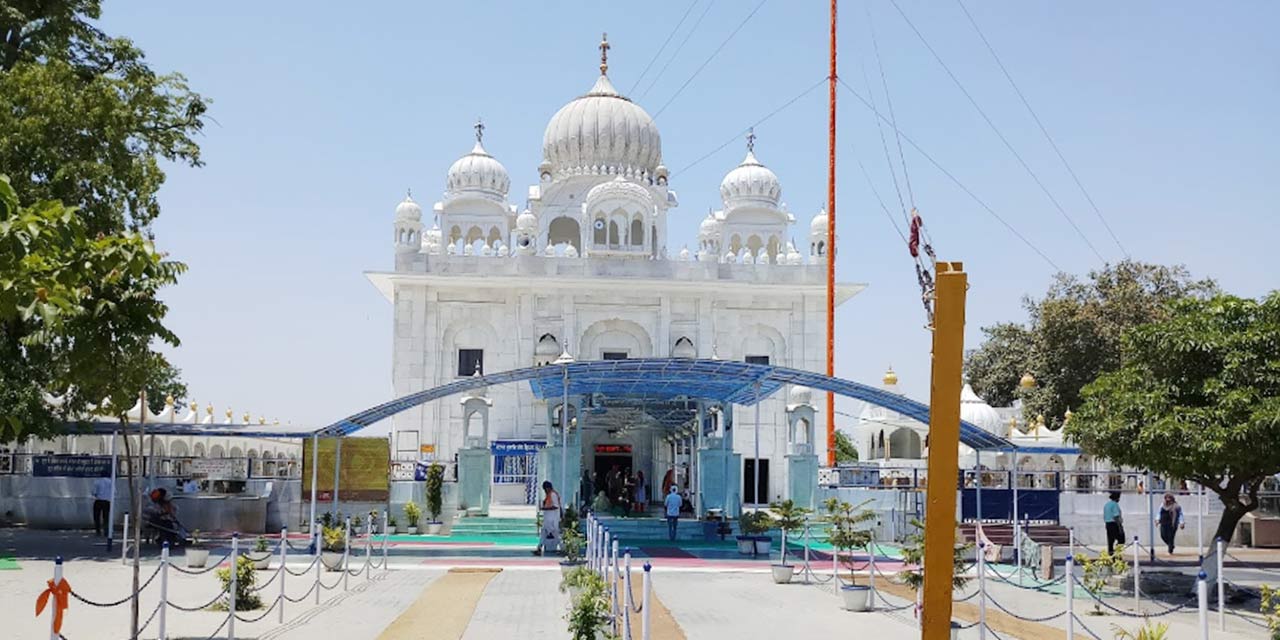
Gurdwara Chheharta Sahib is a Gurdwara located 8 kilometres from Amritsar in the hamlet of Chheharta Sahib. To go to the Gurdwara, one can board a connecting bus (74663 Atari) from Amritsar or rent a local cab.
The most important festival at this ancient location is Basant Panchami, which takes place during the month of Magh and attracts lakhs of people from all across the country. Kite-flying is a big draw during this event, and there are a lot of contests to compete in. Many men wear a yellow turban during the celebration, which attracts visitors. During this time, the regional Gurdwara management provides free medical care.
The Gurdwara is named after Guru Arjan Dev's large well, which he excavated to commemorate the newborn son and successor Guru Hargobind. Due to the quantity of water, six Persian wheels were erected around the well to speed up the water drawing, earning Chehharta its name. Although the well has been covered, the water was formerly piped into the Gurdwara's tank.
The well is thought to have medicinal effects, and travellers may still view the well-preserved Persian Wheels. The Gurdwara is presently run by a local community, with a lotus dome around the square sanctuary. The Gurdwara compound also has a divan hall and all-day langar where guests may eat while taking in the sights.
- Timings: 5:00 AM – 10:00 PM
- Entry Fee: Free
24. Dukh Bhanjani Ber Tree
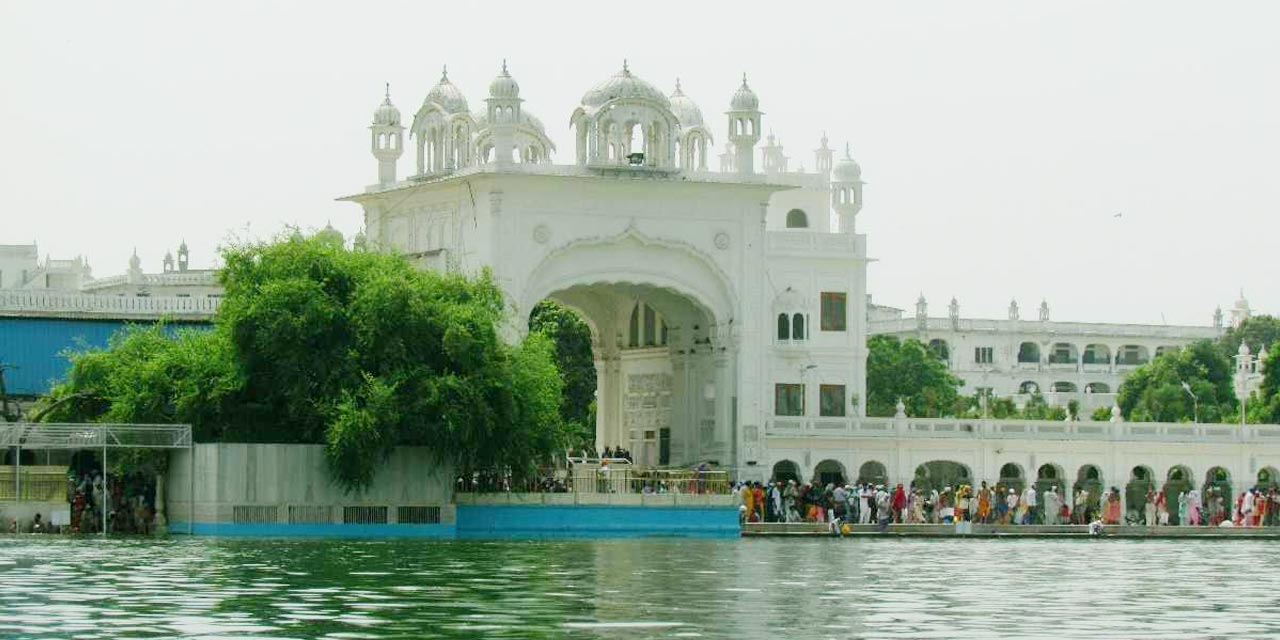
The Dukh Bhanjani Ber Tree, which can be seen within the iconic Golden Temple complex, is Amritsar's most holy tree. Sikhs worship the 400-year-old jujube tree on the eastern bank of the vast Amrit Sarovar because of the history and belief of Bibi Rajni, whose leprosy-stricken husband was mysteriously cured after a bath in the nearby pond. Dukh Bhanjani, which means "eradicator of misery," was the name given to it at the time.
Guru Nanak, the first Sikh Guru, has slept here while chanting Gurbani in great devotion to Waheguru. Guru Ram Das Ji, the 4th Sikh Guru, is said to have had a significant role in creating Amritsar.
The famed Amrit Sarovar was built from a holy pond in the Golden Temple Complex, considered the holy pond of healing prophesied by the 3rd Sikh Guru Amar Das Ji. Amritsar is the name of the city that bears his name.
While entrance to the Amrit Sarovar is prohibited, a little section of it adjacent to the Dukh Bhanjani Beri Tree is open to devotees who seek to bathe in the holy water. Pilgrims to the Golden Temple say that they will be cured of their ailments and get blessings from the tree by doing so.
Although devotees are not permitted to harvest the fruits of the Dukh Bhanjani Ber Tree, they are permitted to gather fallen fruits as 'Prashad.'
- Timings: 12:00 AM – 12:00 AM
- Entry Fee: Free
Amritsar, the top tourist attraction of Punjab, with its several facets of history and culture, presents some of the most beautiful tourist spots you will see. Don’t miss shopping near the Golden temple and devour the splendid street food near Harmandir Sahib. You can easily reach Amritsar via air, rail, or bus, whichever mode suits you the best. Come and spend a few tranquil days enjoying the beauty of this border city and one of the most important cities of the country.
Excited About Amritsar?

